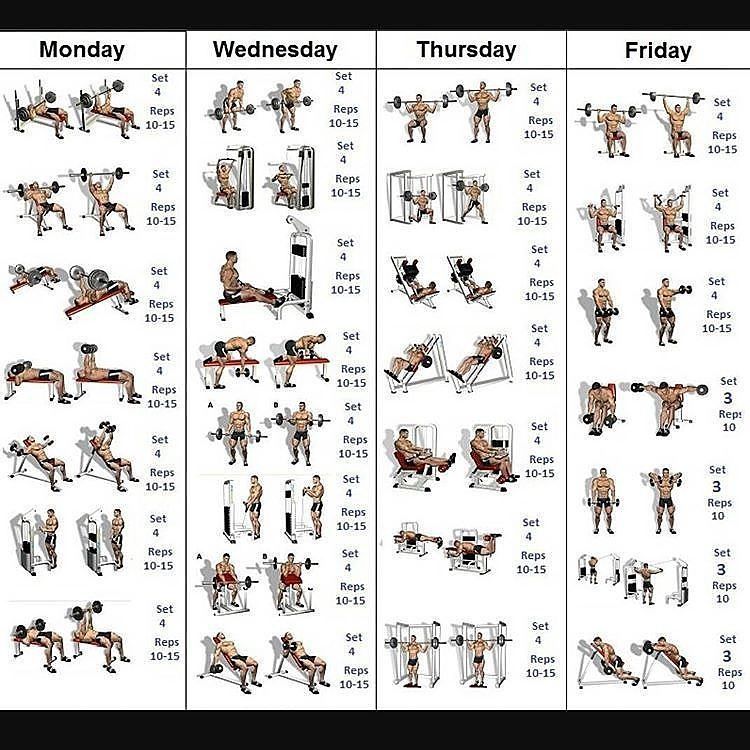
What is your average calorie burn when you run for an hour? Running uphill or outside burns more calories than running in place. Running at a faster pace will also burn calories. What should you do differently to maximize your calorie burning? Read on to discover some of the top ways to burn calories while running. And remember to take a calculator with you on your run to help you understand how many calories you'll burn. Don't forget about taking your time.
Running uphill burns less calories than running downhill
Running uphill burns more calories that running downhill. This is due to the more powerful movements involved. Unlike flat surfaces, uphill running requires you to use more energy and your vastus muscles have to work harder. It is best to wear headbands to keep hair and sweat from entering your eyes. A good running outfit can also help improve your performance. You can plan ahead to make a nutritious dinner and keep to a healthy diet.

Running uphill can actually burn 250 calories more per hour than running flat. For instance, a 155-pound person can burn 1,250 calories while running uphill. This is significantly higher than the 1,250 calories that a 150-pound person can burn while running uphill. It doesn't necessarily have to be steep. A mild incline, even one percent, can increase calorie-burning effectiveness.
Running outside burns more calories then running in a place
While running indoors has its benefits, it actually burns more calories. Running on uneven ground, like sand, requires more energy and therefore, more calories than running on a smooth surface. Wind resistance is another factor that increases the intensity of running. It also increases calories burned. In extreme temperatures, the number calories burned is also higher. These are just a few of the reasons why running outside burns more calories than running in place for an hour.
Running outside has another advantage: you can change your pace. A jogging pace that is three percent faster than running in place for an hour will burn more calories than a similar pace on a treadmill. Change the wind resistance or incline to increase calories. You may need to adjust your speed according to your fitness level.
Running at a faster pace will burn more calories
Running at a leisurely pace will typically burn around 60 calories per mile. Your pace, terrain, and outliers can all impact how many calories you burn. Running faster will burn more calories per hour than running at a normal pace. If you're new to running, here are some tips to keep in mind when starting a running program:

Your weight and distance will determine how many calories you burn during an hour of running. For a 170-pound person, however, a 10 minute mile will burn around 150 calories. A man who is 170-pound will burn about 378 calories in just 10 minutes. A 15-minute walk will burn around 131 calories and about 154 calories in just 30 minutes.
FAQ
How long does a weight loss process take?
It takes time for weight loss. It usually takes six months to lose 10% of your total weight.
You shouldn't expect weight loss overnight. Your body needs time to adjust to new dietary changes.
This means that you need to slowly change your diet over a period of time, such as a few days or weeks.
Fad diets don't work and you should get off them. Instead, focus on improving your daily routine.
If you eat unhealthy snacks at night, you might want to cut back.
You should eat healthier meals in the morning. This will ensure that you don't snack late at night.
You should also drink plenty of water during the day. Water helps to keep your body hydrated and prevents dehydration. Dehydration makes you feel tired and sluggish.
Therefore, drinking lots of water throughout the day will help you stay energized and focused.
Finally, you should reduce stress levels by doing things that relax you. You could spend quality time with your loved ones.
You could also read books or watch movies, or listen to music.
These activities will help to relax and unwind from stressful situations. They can also help improve your moods and self-esteem.
So, when you're trying to lose weight, you should always think about your health first.
Your physical fitness level is an indicator of your overall health. You should eat right and exercise regularly if you want a fit body.
What Can You Lose in One Week?
The amount of weight that you can lose will depend on how high your body fat percentage is. First, calculate how much weight your goal weight is and then determine what your BMI (Body Mass Index). Your BMI will tell you how much weight to lose. If your BMI is 25 or greater, you're overweight. If your BMI exceeds 30, you may be obese.
For example, let's say you have a BMI of 28.7 and are 200 pounds. To get to a healthy weight range, you'd need 70 pounds of weight loss. To see if you're overweight, visit www.healthyminds.com/bmi/.
Once you know your BMI, you can use this formula to figure out how many pounds you'll lose per week:
(Your Goal Weight - Current Weight)/BMI * 7 Number Of Pounds Lost Per Week
You would need to do 2 weeks of exercise to lose 50 lbs in one month. This is equal to 56 days. Divide that by 7 pounds per week. That works out to 8.3 pounds lost per week.
You could also try this calculator from www.weightlosscalculator.net. It will provide an approximate amount of calories that you would need daily to lose one pound per month.
How to make an exercise plan?
It is important to establish a routine. You must know what you will do each and every day, as well as how long it will take. This helps to plan ahead and avoid procrastination.
The second thing is to ensure that you have plenty of variety in your workout. It is important not to get bored while exercising. This will cause you to lose interest and make it difficult for you to stick with it.
Also, you need to keep track on your progress. It's important to see how much weight you have lost or gained over time.
If you lose weight and then gain more weight, it is easy to lose your motivation. If you gain excessive weight, it can be difficult to remain motivated.
You should find a balance between weight gain and weight loss. If you are unhappy with your current situation, you will be less inclined to exercise.
What can I have in the morning when I'm intermittently fasting?
Get water in the morning. This will make you feel fuller and give you energy all day. You can add lemon juice or cucumber slices to enhance the flavor.
What foods are good for me to lose weight quickly?
Consuming fewer calories is a great way to lose weight quickly. Two ways to achieve this are:
-
Reduce the amount of calories that you consume each day.
-
Through physical activity, you can increase the amount of calories that you burn.
It is easy to reduce calories. There are calorie-laden fast food options all around us. Here are some foods that can help you lose those extra pounds.
-
Beans are high on fiber and protein. They have very little fat making them a great option for dieters trying to reduce their caloric intake.
-
Oatmeal is low on calories but high in nutrients, such as magnesium or potassium. Plus, it contains less sugar than other cereals.
-
Eggs are full of cholesterol and protein. Eating eggs at least twice a week can increase your metabolism, which helps you burn more calories.
-
Whole grain bread can reduce hunger pangs, so you might feel fuller for longer.
-
Dark chocolate is high in antioxidants, flavonoids and other substances that have been linked with lower blood pressure and better heart health.
-
Cottage cheese is rich with calcium, which helps build strong bones. Cottage cheese is also high in calcium, which aids in bone strength.
-
Omega-3 fatty acid rich salmon is good for your brain and cardiovascular health.
-
Green tea is chock-full with catechins. These compounds fight cancer and boost metabolism.
-
Broccoli is rich in folic Acid, which lowers homocysteine blood levels. A higher risk of developing heart disease and stroke is associated with high homocysteine levels.
-
Yogurt is a wonderful way to get probiotics into your diet, without having to consume a lot of added sugars. Probiotics are essential for digestive health.
-
Berries are a delicious snack option that's also very nutritious. Blueberries (strawberries), blackberries; raspberries and cranberries all provide excellent sources of vitamins.
-
Avocados are full of healthy fats. A half avocado provides 80 calories with plenty of fiber, potassium, and filling fiber.
-
Nuts can be enjoyed as a snack, but they are also rich in protein. Almonds, cashews, hazelnuts, pecans, walnuts, and pistachios are all great choices.
-
Sweet potatoes are another starchy vegetables that are high in beta carotene. They make your skin glow. The orange sweet potato variety has a higher level of beta-carotene than regular sweet potato varieties.
Statistics
- According to a study sponsored by the American Council on Exercise, a person weighing around 140 pounds (64 kg) would burn 108 calories at a 30-minute beginner's Pilates class or 168 calories at an advanced class of the same duration (26). (healthline.com)
- According to Harvard Health, it's estimated that a 155-pound (70-kg) person burns roughly 112 calories per 30 minutes of weight training (5). (healthline.com)
- A 12-week study in 20 women with obesity found that walking for 50–70 minutes 3 times per week reduced body fat and waist circumference by an average of 1.5% and 1.1 inches (2.8 cm), respectively (healthline.com)
- According to Harvard Health, it's estimated that a 155-pound (70-kg) person burns around 167 calories per 30 minutes of walking at a moderate pace of 4 mph (6.4 km/h) (5). (healthline.com)
External Links
How To
How to quickly lose belly weight?
You should know that losing bellyfat is difficult. It takes dedication and hard work. But if you follow these tips, you will definitely see results.
-
Healthy Food Healthy eating is crucial. Healthy food includes fruits, vegetables, whole grains and lean proteins.
-
Drink Water. Drinking water keeps your body hydrated, making you feel full and satisfied for longer periods. Drink plenty of water each day.
-
Cardio exercises. Cardio exercises are great for building muscle mass and helping you burn more calories. They can improve your heart health as well as increase metabolism. Try to do 30 minutes of cardio exercise daily.
-
Get enough rest. A vital part of maintaining good health is sleep. A lack of sleep can lead anxiety and stress that can then be exacerbated by unhealthy habits like smoking and drinking.
-
Reduce Stress Levels. Stress has a profound effect on brain chemistry as well as hormonal levels. When we are stressed, our bodies produce cortisol, a hormone that increases hunger pangs and cravings for high-calorie foods.
-
Take regular breaks. You should take regular breaks throughout your day. Get outside to take a walk, or take some time to rest. This gives your body and mind time to relax.
-
Avoid Alcohol Consumption. Avoid alcohol consumption. It is high in empty calories and slows down your digestion. Alcohol should be avoided if you're looking to lose belly-fat.
-
Have fun